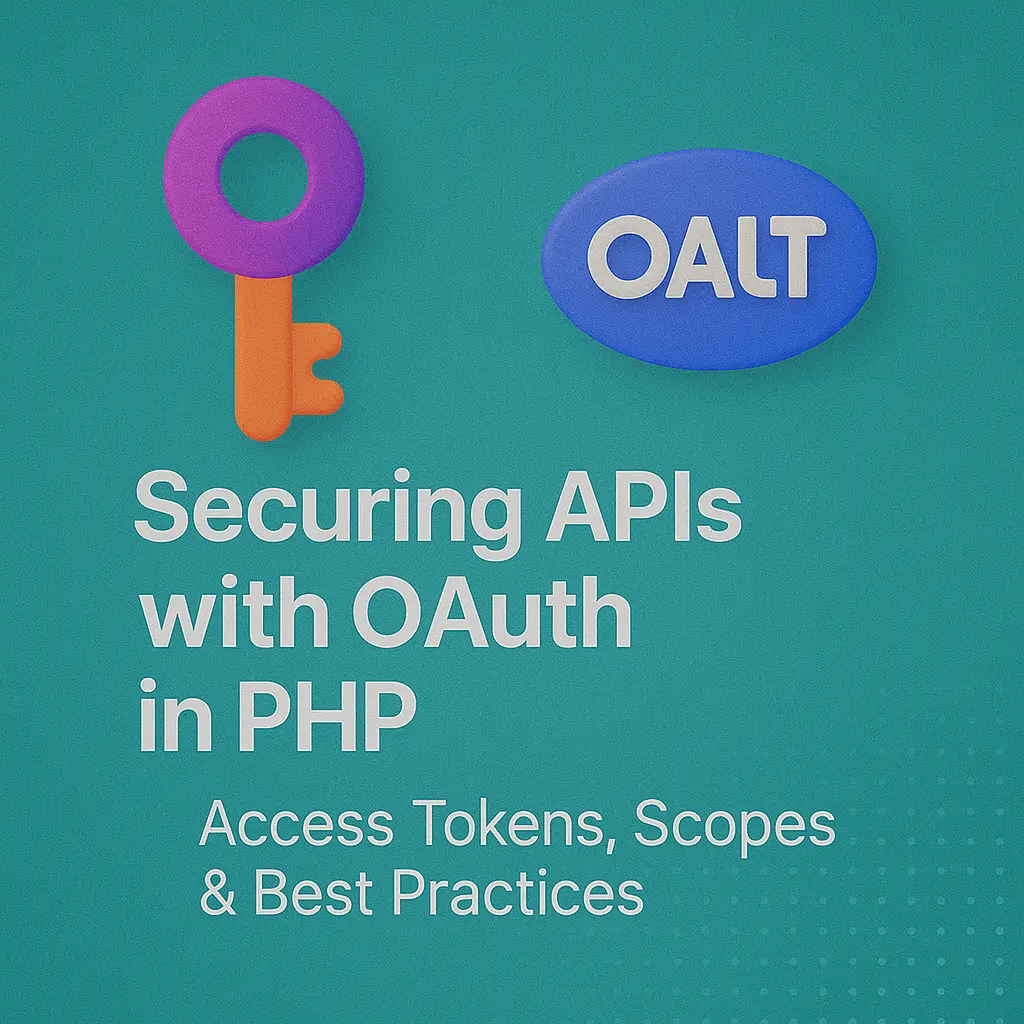In this comprehensive guide, we’ll explore the fundamentals of OAuth and delve into how we can implement OAuth authentication to secure APIs effectively using PHP.
Introduction to OAuth
OAuth, initially conceived in 2006 by Blaine Cook and adopted by Twitter, is a widely-used authorization protocol that enables third-party applications to access protected resources on behalf of a user. OAuth simplifies the authentication process by allowing users to grant permissions to applications without sharing their passwords directly. The OAuth protocol defines a series of steps for obtaining access tokens, which can then be used to access protected resources.
Key components of OAuth include
Client: The application requesting access to protected resources.
Resource Owner: The user who owns the protected resources and grants permission to the client.
Authorization Server: The server responsible for authenticating the user and issuing access tokens.
Resource Server: The server hosting the protected resources that the client wants to access.
OAuth supports different grant types, including Authorization Code Grant, Implicit Grant, Client Credentials Grant, and Resource Owner Password Credentials Grant, each tailored to specific use cases and security requirements.
Implementing OAuth Authentication
Implementing OAuth authentication in PHP involves setting up an OAuth server to handle authentication and token issuance, as well as integrating OAuth client functionality into your applications. Let’s explore the steps to implement OAuth authentication using PHP:
Choose an OAuth Library:
Select an OAuth library or framework for PHP to facilitate the implementation of OAuth authentication. Popular choices include OAuth2 Server for PHP, The League OAuth2 Server, and Laravel Passport (if you’re using Laravel).
Setup OAuth Server:
Configure and set up your OAuth server to handle authentication requests and issue access tokens. Define client credentials, supported grant types, and token expiration policies according to your application’s requirements.
// Example configuration of OAuth server using OAuth2 Server for PHP
$dsn = 'mysql:dbname=oauth2;host=localhost';
$username = 'oauth2';
$password = 'password';
$storage = new \OAuth2\Storage\Pdo(['dsn' => $dsn, 'username' => $username, 'password' => $password]);
$server = new \OAuth2\Server($storage);
Implement OAuth Endpoints:
Define OAuth endpoints for handling authorization requests, token requests, and token revocation. These endpoints include authorization, token, and revocation endpoints, each responsible for specific OAuth operations.
// Example implementation of OAuth authorization endpoint
$server->addGrantType(new \OAuth2\GrantType\AuthorizationCode($storage));
$server->addGrantType(new \OAuth2\GrantType\RefreshToken($storage));
$server->addGrantType(new \OAuth2\GrantType\UserCredentials($storage));
Integrate OAuth Client:
Integrate OAuth client functionality into your applications to obtain access tokens and access protected resources on behalf of users. Use client libraries or SDKs provided by the OAuth server to simplify the integration process.
// Example OAuth client implementation using Guzzle HTTP client
$client = new GuzzleHttp\Client();
$response = $client->post('http://example.com/token', [
'form_params' => [
'grant_type' => 'authorization_code',
'client_id' => 'your-client-id',
'client_secret' => 'your-client-secret',
'redirect_uri' => 'http://your-redirect-uri',
'code' => 'authorization-code',
],
]);
$body = json_decode((string) $response->getBody(), true);
$accessToken = $body['access_token'];
Secure API Endpoints:
Protect your API endpoints by validating access tokens and enforcing authorization rules. Verify access tokens using token validation middleware or libraries provided by the OAuth server, and grant or deny access based on the token’s validity and scope.
// Example middleware to validate access tokens in Slim Framework
$app->add(new \OAuth2Server\Middleware\OAuth2Middleware($server));
Handle Token Revocation:
Implement token revocation logic to allow users to revoke access tokens and invalidate sessions. Provide endpoints for token revocation requests and update the token status accordingly in the OAuth server’s storage.
// Example implementation of token revocation endpoint
$server->handleRevokeRequest(\OAuth2\Request::createFromGlobals())->send();
Conclusion
By following these steps and best practices, you can implement OAuth authentication in PHP applications to secure APIs effectively and protect sensitive data from unauthorized access. OAuth provides a standardized and secure approach to authentication and authorization, enabling seamless integration with third-party applications while maintaining the integrity and security of your APIs. Embrace OAuth as a cornerstone of your API security strategy and empower users to safely access resources across the digital landscape.






